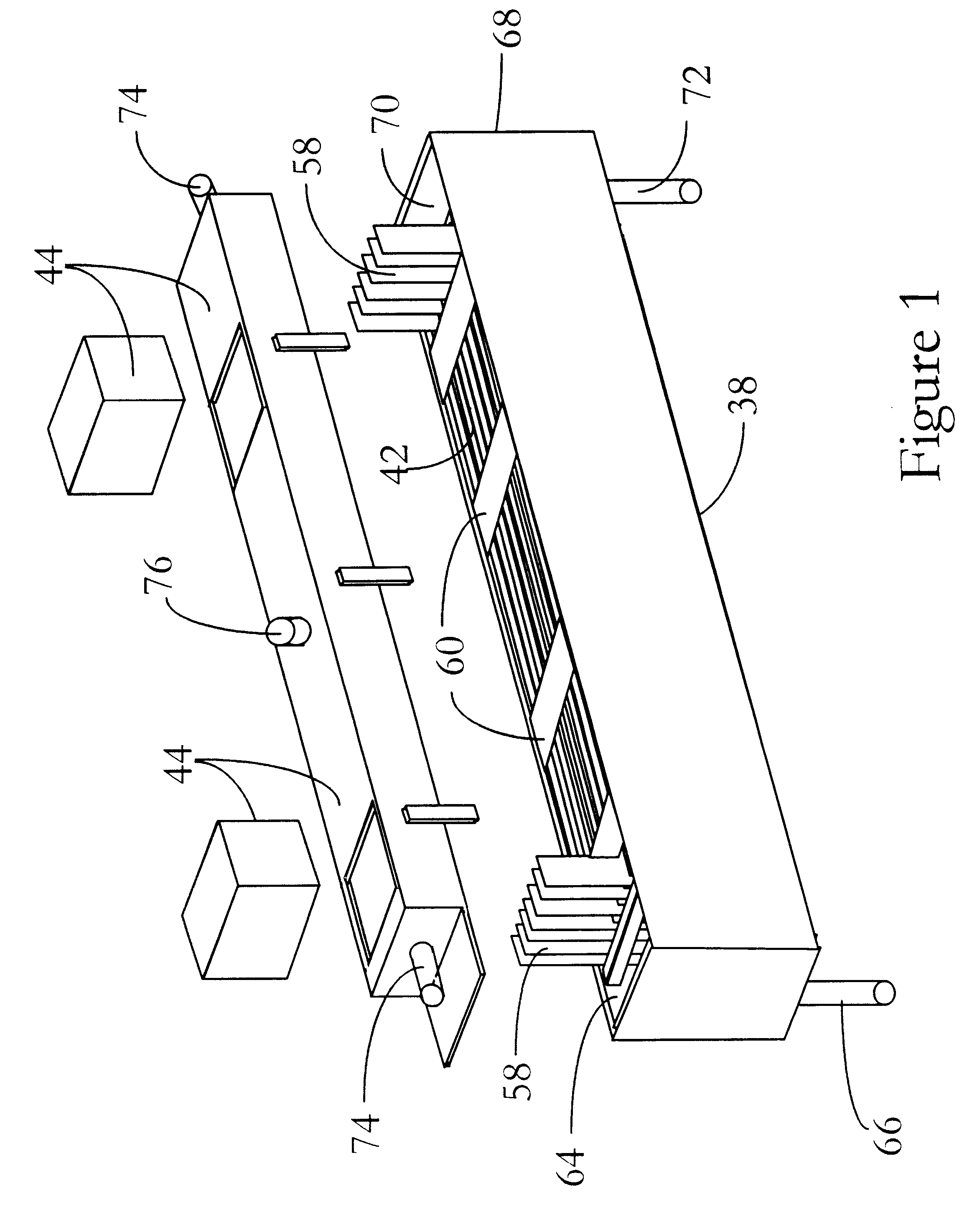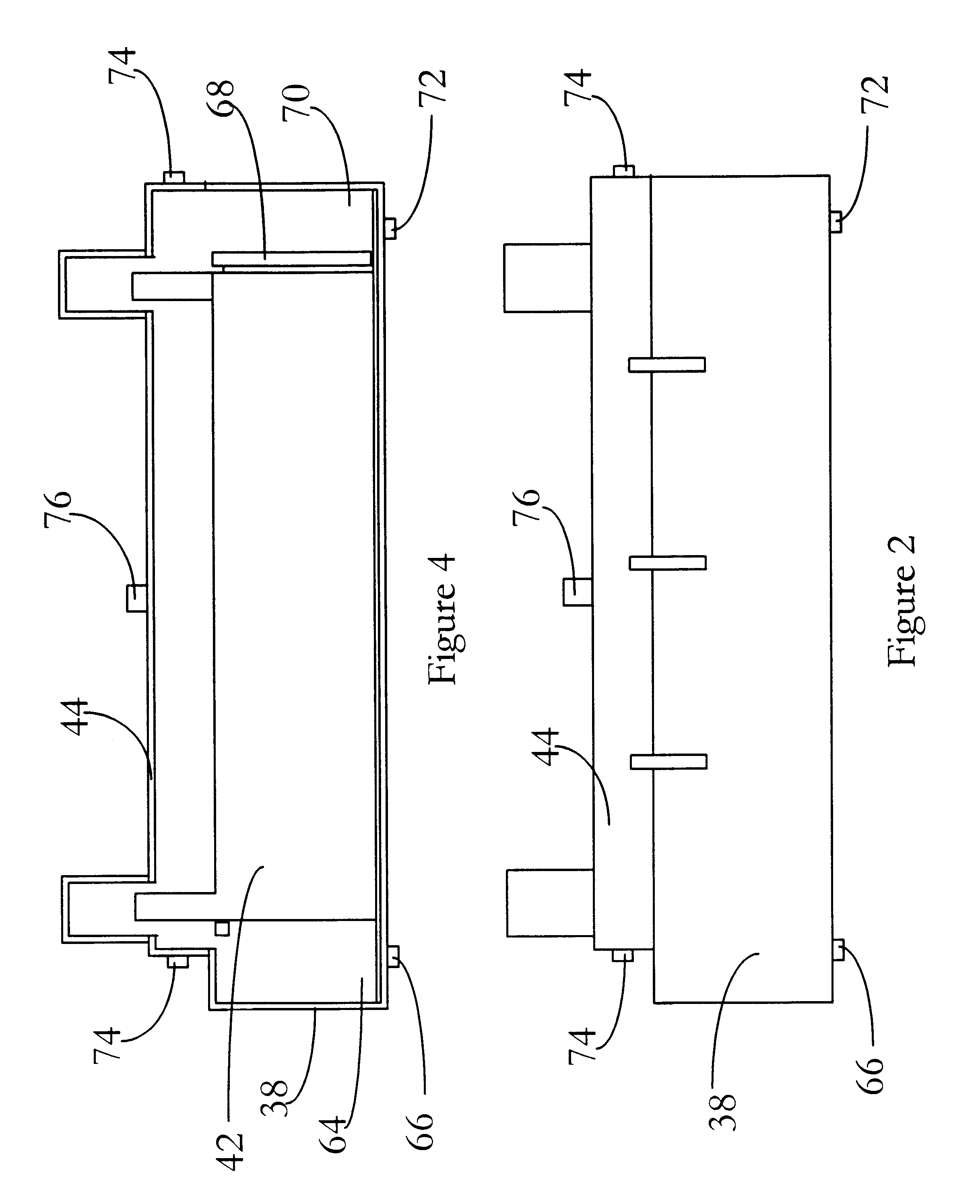Electrocoagulation chamber and method
a technology of electrocoagulation chamber and electrocoagulation chamber, which is applied in the direction of fluid pressure measurement, liquid/fluent solid measurement, peptide measurement, etc., can solve the problems of increasing the complexity of the necessary equipment, increasing the cost of treatment, impurities and undesirable components, etc., and achieves the reduction of cost and complexity, improved efficiency, and low cost
- Summary
- Abstract
- Description
- Claims
- Application Information
AI Technical Summary
Benefits of technology
Problems solved by technology
Method used
Image
Examples
Embodiment Construction
of the Primary Components:
A preferred surge tank 24 has sufficient capacity to hold a predetermined minimum reserve of liquid, such as 5 minutes of liquid 18, based upon the system flow rate. When chemical enhancement additives are used, a static mixer is provided in the tank to ensure the additives are thoroughly mixed in the liquid. When ozone is added, an ozone diffuser is located in the surge tank, and when oxygen added, a micro-bubbler is located in the bottom of the tank.
The chemical enhancement additives most commonly are acidic or caustic chemicals that alter the pH of the liquid. When a pH adjustment is needed, the acid or caustic is pumped into the surge tank by metering pump 30, which is controlled by a pH probe in the surge tank. Other chemicals can be added in a similar way, in some instances by a metering pump controlled by a timer in the PLC control system 56.
The ozone generator 36 is sized according to the flow rate of the liquid 18. This additive is used to treat co...
PUM
| Property | Measurement | Unit |
|---|---|---|
| distance | aaaaa | aaaaa |
| distance | aaaaa | aaaaa |
| distance | aaaaa | aaaaa |
Abstract
Description
Claims
Application Information
 Login to View More
Login to View More - R&D
- Intellectual Property
- Life Sciences
- Materials
- Tech Scout
- Unparalleled Data Quality
- Higher Quality Content
- 60% Fewer Hallucinations
Browse by: Latest US Patents, China's latest patents, Technical Efficacy Thesaurus, Application Domain, Technology Topic, Popular Technical Reports.
© 2025 PatSnap. All rights reserved.Legal|Privacy policy|Modern Slavery Act Transparency Statement|Sitemap|About US| Contact US: help@patsnap.com



